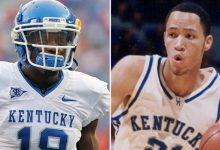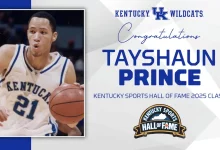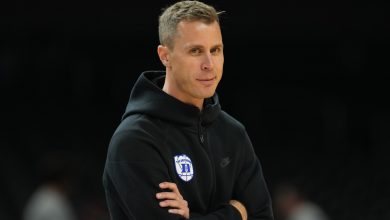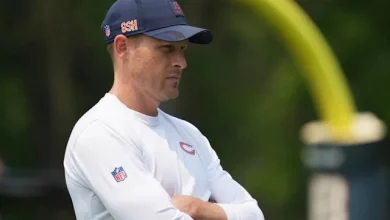ESPN considers Notre Dame’s tight end position the primary concern for the 2025 season, highlighting it as a critical area that could significantly impact the team’s overall offensive performance.
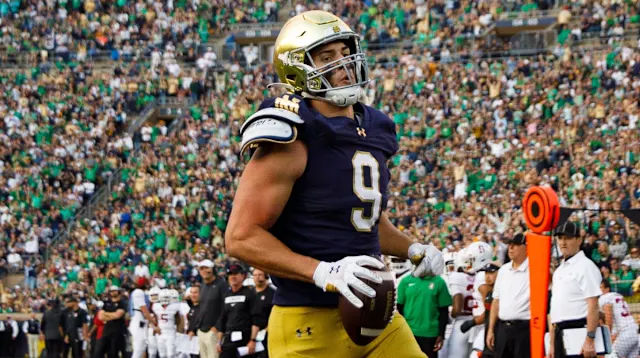
The tight end position has historically been a pivotal component of Notre Dame football, serving as both a reliable blocker and a versatile receiver. However, as ESPN has identified the 2025 season, the Irish’s tight end corps is viewed as the primary area of concern, suggesting that weaknesses or uncertainties at this spot could have far-reaching consequences on the team’s offensive efficacy and overall performance. This analysis explores the multifaceted nature of this concern, emphasizing the importance of the tight end role, evaluating the current roster, examining strategic implications, and understanding how this focal point could influence Notre Dame’s ambitions in 2025.
The Significance of the Tight End in Modern Football
In contemporary college football, the tight end position has evolved from a primarily blocking role to a dynamic hybrid capable of contributing significantly in the passing game. Coaches increasingly utilize tight ends as mismatched weapons—linebackers or safeties are often unable to cover them effectively, making them a key component in offensive schemes that emphasize versatility, mismatch creation, and strategic deception.
At Notre Dame, this trend has been evident, with successful teams integrating athletic tight ends who excel at route running, contested catches, and run-blocking. The tight end’s ability to serve as a safety valve for quarterbacks, a blocker in crucial moments, and a threat in the red zone underscores its importance in orchestrating a balanced and unpredictable offense.
Historical Context of Notre Dame’s Tight End Success
Historically, Notre Dame has produced exemplary tight ends who have left a lasting impact both at the college level and in the NFL. Names like Ken MacAfee, Anthony Fasano, and Tyler Eifert exemplify the tradition of talented, reliable tight ends who contribute across multiple facets of the game.
In recent years, the Irish have leaned on tight ends such as Cole Kmet and Michael Mayer, the latter considered one of the best at his position nationally during his tenure. Mayer’s emergence as a top NFL prospect underscored the value Notre Dame places on the position. The success of these players has raised expectations for continuity and excellence at tight end, setting a standard that the 2025 team now faces.
Current Roster Analysis and Why ESPN’s Concern Is Valid
As ESPN’s assessment suggests, the 2025 roster currently presents uncertainties at the tight end position. Analyzing the roster reveals factors contributing to this concern:
Lack of Proven Experience: Notre Dame may be entering 2025 with a tight end corps lacking returning starters with significant game experience. The absence of a seasoned veteran could hinder offensive consistency and limit the quarterback’s trust in the position.
Talent Development and Depth: The available tight ends may be young or unproven, raising concerns about their ability to execute complex blocking schemes and develop chemistry with the quarterback. Limited depth at the position could become problematic if injuries or attrition occur.
Athleticism and Receiving Skills: If the roster features tight ends primarily recruited for blocking, their ability to stretch the field or create mismatches might be limited. Conversely, if the athletic pass-catching tight ends are inexperienced, the team might face challenges in executing advanced passing concepts effectively.
Injury Risks and Durability: The physical demands of the tight end position make injury a real concern. A lack of reliable backups could jeopardize offensive continuity if starters miss time.
Strategic Implications for Notre Dame’s Offensive Scheme
The tight end’s role in Notre Dame’s offensive philosophy is multifaceted. An uncertain or underperforming tight end group could force adjustments in several ways:
Shift to a More Wide-Receiver-Heavy Scheme: Without dependable tight ends, the offense might rely more heavily on wide receivers and running backs, potentially reducing the offensive versatility and unpredictability.
Limits in Red Zone Efficiency: Tight ends often serve as primary targets in the red zone due to their size and catching ability. Concerns here could lead to decreased scoring efficiency and more reliance on field goals.
Impact on Play-Action and Mismatches: Tight ends are crucial in play-action schemes that create mismatches against linebackers or safeties. A weaker tight end group could diminish the effectiveness of these plays, making the offense more predictable.
Quarterback Development and Confidence: The quarterback’s trust in the tight end position affects decision-making and timing. Struggles at tight end could lead to more conservative play or increased turnovers.
Comparison to Previous Seasons and the Evolution of Notre Dame’s Tight End Usage
In recent seasons, Notre Dame has capitalized on the talent of standout tight ends like Michael Mayer, who showcased elite receiving skills and blocking prowess. These players often served as safety valves, red zone targets, and key blockers in running schemes.
The transition from such high-caliber players to an uncertain 2025 group raises questions about whether the Irish can replicate previous offensive efficiency. If the team’s current tight ends are less athletic or less experienced, it could impact the flow and explosiveness of their offense.
Historically, Notre Dame has adapted its offensive strategies based on personnel, emphasizing tight end involvement when the position has been strong and compensating with more receiver-centric schemes when it has been weaker. ESPN’s concern suggests the 2025 team may need to adapt significantly if the tight end position fails to meet expectations, potentially altering their identity on offense.
Coaching Strategies and Developmental Focus
Head coach Marcus Freeman and his coaching staff play a vital role in addressing this concern. Their ability to develop the tight ends, design schemes that maximize their strengths, and adapt game plans accordingly will be crucial.
Player Development: Emphasizing coaching efforts to improve blocking, route running, and catching ability among the tight ends could mitigate some concerns.
Scheme Adjustments: Incorporating more double tight end sets, utilizing H-backs or fullbacks, or shifting to more receiver-driven formations could offset weaknesses.
Talent Acquisition and Recruiting: Recognizing the importance of the position, Notre Dame’s recruiting efforts focusing on athletic tight ends could be intensified to bolster depth and talent.
Utilizing Versatile Players: Developing other skill position players to fill tight end-like roles, such as hybrid H-back or slot receivers, could provide additional options.
Recruiting and Future Outlook
The concerns voiced by ESPN highlight the importance of recruiting talented tight ends to restore Notre Dame’s traditional strength at the position. The program’s ability to attract athletic, reliable tight ends who can develop into playmakers will determine whether this concern translates into actual on-field issues.
Notre Dame’s recruiting classes have historically prioritized tight ends, recognizing their significance in the offensive scheme. For the 2025 class, emphasis on athletic tight ends with both blocking and receiving prowess will be critical. Developing these players early and integrating them into the offense will be essential for future seasons.
Potential Impact on Team Success in 2025
The tight end position’s uncertainty could influence Notre Dame’s overall success in 2025 in several ways:
Offensive Consistency: Weaknesses here could lead to inconsistency, especially in critical situations like third-and-long or red zone conversions.
Game Planning Flexibility: Limited tight end threat could restrict offensive diversity, making the team more predictable.
Defensive Focus: Opponents might double-team or bracket tight ends, leading to adjustments elsewhere on the field.
Team Confidence: A lack of reliable tight end options could impact quarterback confidence and overall offensive rhythm.
Despite these potential challenges, Notre Dame’s defense, special teams, and overall talent level could compensate to some extent, but addressing the tight end concern remains vital.
ESPN’s designation of Notre Dame’s tight end position as the primary concern for the 2025 season underscores the critical role that this position plays within the Irish’s offensive framework. From historical significance and strategic importance to roster evaluation and recruiting efforts, the tight end’s success or struggles will significantly influence Notre Dame’s overall performance and aspirations. While uncertainties exist, proactive coaching, strategic adaptation, and targeted recruiting can mitigate these concerns. Ultimately, the 2025 season will serve as a litmus test for Notre Dame’s ability to develop and deploy its tight end talent effectively, determining whether this concern becomes a weakness or an opportunity for growth and innovation.

